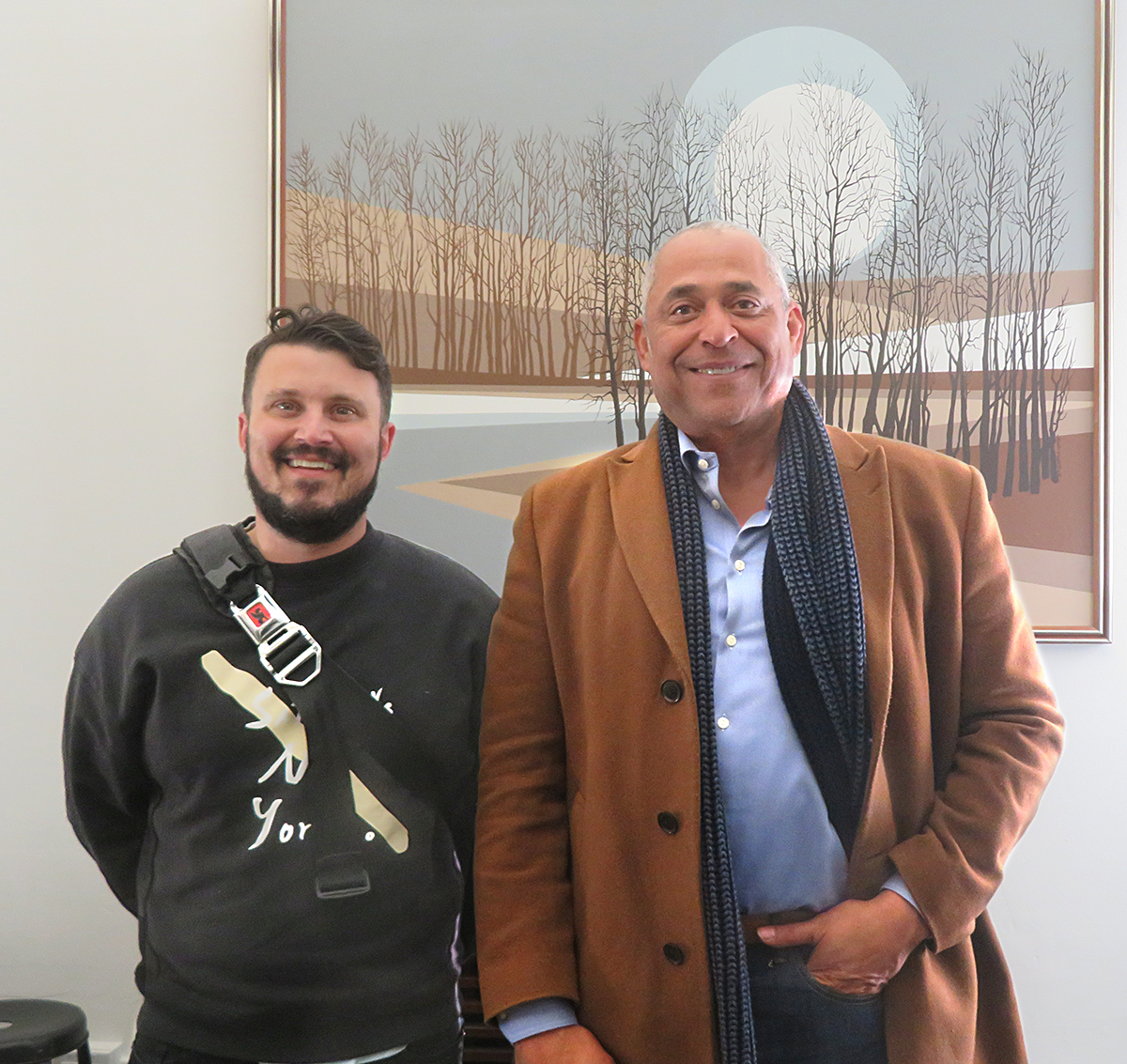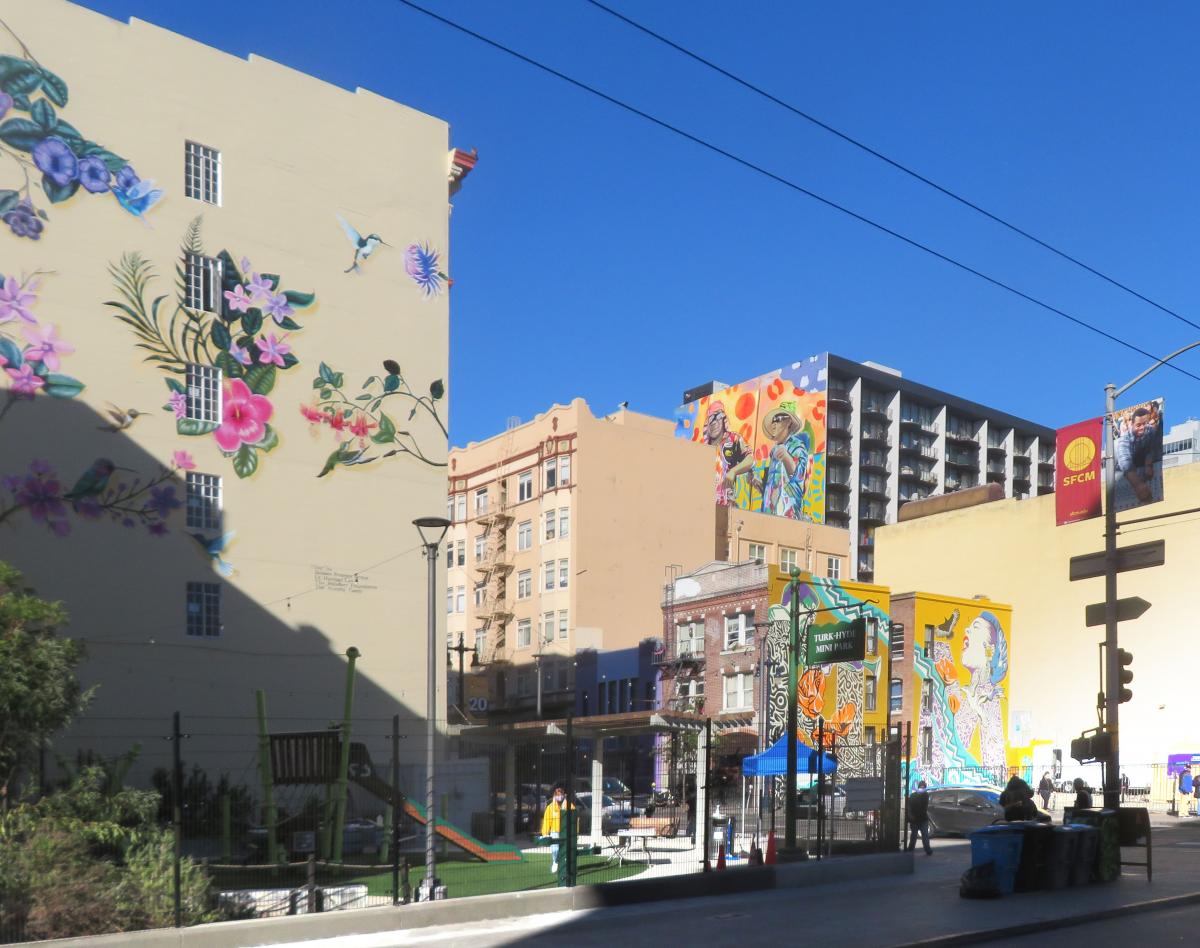
How an Eichler Thrives in the Tenderloin
 |
They were Joe Eichler’s grandest attempt to provide affordable, modern housing for the urban working class. But the two sets of paired high-rises, one in the city’s southern edge, the other in the city’s heart, did not fare equally well.
Geneva Towers, built in 1966 and within sight of Daly City’s Cow Palace, grew crime ridden and dilapidated and was demolished in 1998.
Central Towers, known today as Mosser Towers, from 1964, still serves the same sorts of people whom Joe aimed to serve more than 50 years ago, says Neveo Mosser, CEO of Mosser Companies.
“Many of the things that I believe Eichler considered in building this still come into play, probably more so, today,” Neveo says.
 |
“We’re providing what we call affordable workforce housing, where it’s close to recreation, close to transportation modes, and also close to places.”
“Our demographic is reflective of San Francisco as a whole,” he says of residents. “It’s definitely majority minorities, a heavy presence of Spanish speaking, people that are working downtown or working in hospitality and/or the service industries.”
Pre-pandemic, says Maria Villegas, Mosser manager, tenants included “people fresh out of college,” some working for Twitter, whose offices are close by. Some tenants have admired the Mosser for its Eichler style.
While Eichler is known for mid-century modern suburban ranches for the middle class, throughout the builder's career he proposed and occasionally managed to build multi-family housing aimed at a variety of incomes.
Despite its size – two conjoined buildings, one at 350 Turk Street, the other at 455 Eddy, 14 stories over parking, 364 rental apartments – this is one of Eichler’s least-known neighborhoods. Even most tenants don’t know they are living in an Eichler.
 |
Yet an Eichler it is, and with probably the smallest units Joe ever offered: studios and one-bedrooms ranging from roughly 250 to 600 square feet.
The Tenderloin has long been one of the city’s liveliest neighborhoods in ways both good and bad. The good? Residents from all over the world, edgy art and music spaces, many eateries, classy early 20th century residential hotels that have made the neighborhood a National Register historic district.
The bad, though, is what most outsiders know: rampant drug dealing, fentanyl deaths, un-housed people, many mentally ill, lounging on sidewalks. The Tenderloin was a tough neighborhood back in ‘64, too, when Joe put up the buildings to a design by Claude Oakland & Associates.
 |
Like suburban Eichlers, these have walls of glass and radiant heat, the controls tucked into each unit’s closet. The apartments never had mahogany walls. “Popcorn ceilings, concrete walls, very small kitchens,” Neveo says. One of the structure’s most distinctive features are each apartment’s curved balconies.
Another popular feature is the large courtyard between the buildings where neighbors socialize, walk dogs, and celebrate Halloween and Christmas parties.
Mosser, which has owned the building for more than 30 years, has done substantial renovations while keeping true to the original, Neveo says.
Upcoming renovations include redoing the lobby. “We want it to feel more mid-century when you come in,” says Bryce Vree, the firm’s director of asset management, and Neveo’s nephew.
Even though many residents don’t know the building is an Eichler, city planners do. When Mosser sought approval for renovations, Bryce says, “It took a while for the city to approve it because it is [built by] a famous architect.”
Joe would probably appreciate that the Mosser is “minority and women owned,” according to Neveo, whose father founded the company in the mid-1950s.
 |
Mosser Capital owns residential buildings throughout San Francisco and L.A. Within five minute's walk from the Mosser you pass about 20 apartment houses with the Mosser sign out front; most are renovated early 20th century buildings of four or five stories.
Neveo, who’s active with the city’s association of apartment owners, has also been involved with the African American Cultural Center and the nearby Tenderloin Museum. He says Mosser helped upgrade not just the building but the neighborhood.
When Mosser bought it, “the building was suffering. The activity at that time on the street was very similar to the activity that was going on in the building,” Neveo says, meaning drugs and crime.
Neveo and colleagues also worked to clean up the neighborhood, including by creating a non-profit Adopt a Block organization. Neveo says Mosser doesn’t buy in distressed neighborhoods to flip, but to keep and own.
While most residents are not Eichler fans, Bryce says many members of “a certain demographic” are.
“Before the Castro, this was the LGBT neighborhood. A lot of the older tenants are older gay men who have lived in the Tenderloin for 40 years, and a lot of them are very aware that this is an Eichler building. And we’re proud of that, and we’re proud of the architecture.”
- ‹ previous
- 318 of 677
- next ›



